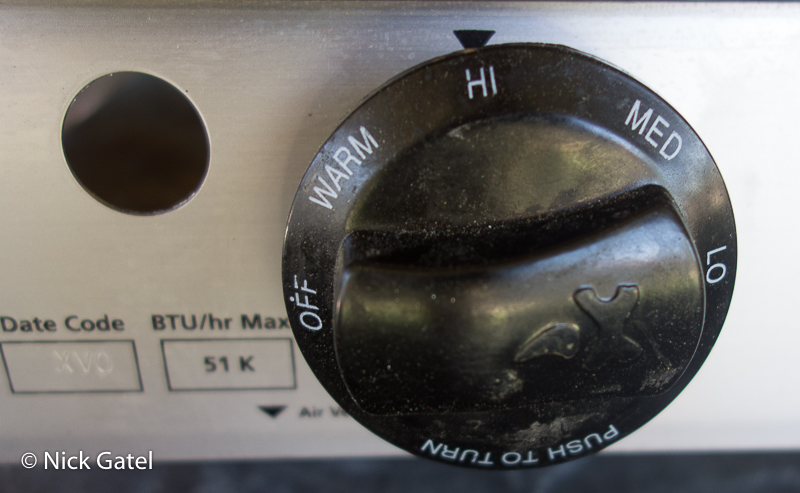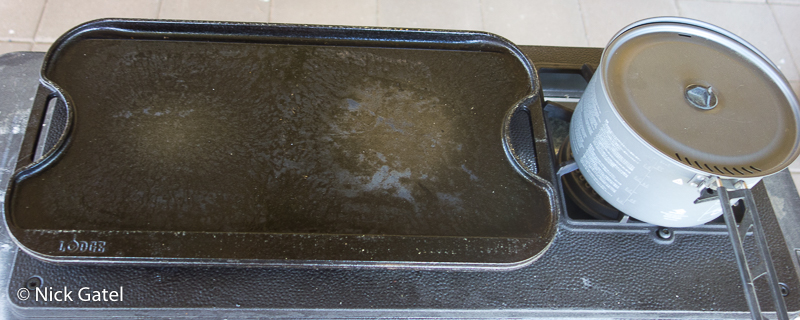We’ve had this stove for only a couple years, so I can’t call this a review. Not enough years to determine is reliability and durability. Let’s call this a short term or quick review.
Yesterday I posted an article on how to choose a camp stove. Using the same criteria, let’s see if the Camp Chef Ranger III meets the attributes we need in a camp stove:
- Fuel: I want the stove to connect to our camper’s low-pressure propane system using a quick connector.
- Wind Worthy: It has to work well in windy conditions.
- Ample Burner Power: This is measured in BTUs.
- Compact: It has to be easy to store.
- Size: It has to be large enough to fit a decent size pot(s).
- Light: As light as possible.
- Griddle Compatible: Big enough for a decent sized griddle.
Fuel
I wanted it to run off the camper’s low pressure system. I didn’t have to make any changes since I had been using my hoses and fittings for the past 5+ years. It was just a matter of replacing the old stove with the new and both connect to a 3/8” female flare swivel fitting.

The old stove had an integrated stand with legs. The Ranger is a table top stove and the hose is easy to attach.
Wind Worthy: It has to Work Well in Windy Conditions
This passes the test. Not perfect in wind but no camping stove will be. The burners are recessed below the grates.
This is a three burner stove and is 29 inches long. Our old two burner stove is 32 inches long. There is a lot less space inside the Ranger III (1044 cu in versus 1920 cu in for the old one), meaning there is almost 50% less air to be disturbed by wind.
The Ranger III has a solid cook top with three grates combined for 192 square inches of open space above the burner area. The Pro 60D has a wire grate with well over 400 square inches of open area.
Also if you remember, the Camp Chef Pro 60D had a lot of vents on side and rear body of the stove.
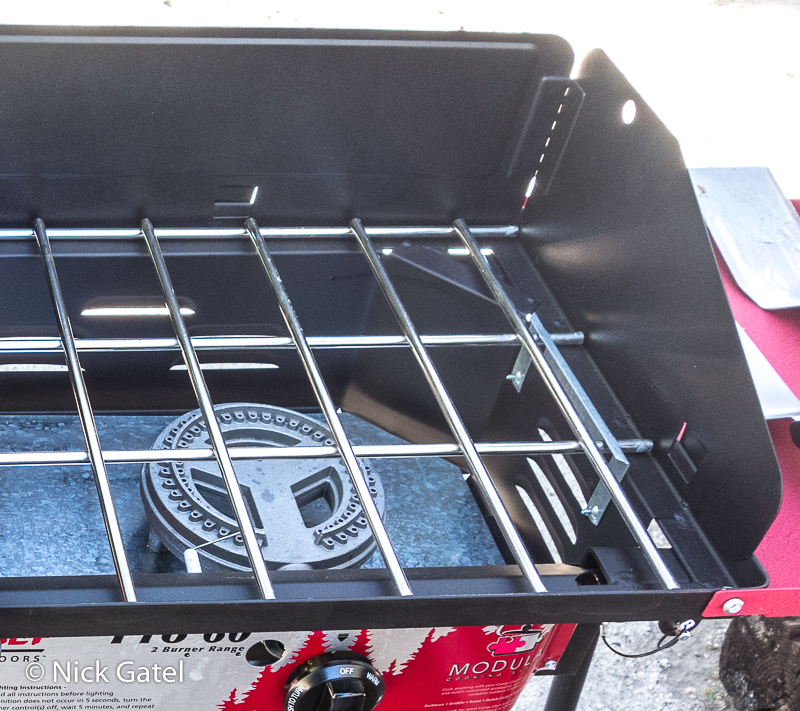
The Ranger III has very few vents in comparison.

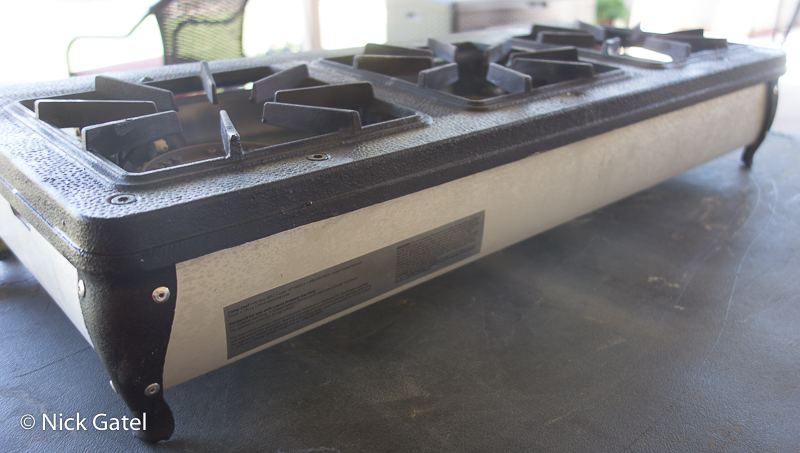

Unlike most outdoor camping stoves, there is no windshield for the top of the stove. Because of the design of the stove it is not needed. However, a windshield also acts to catch any spattering grease of food. So I have to be careful when cooking next to the camper’s outside wall.
Ample Burner Power
If you read the post on choosing a stove, I mentioned the Camp Chef Pro 60 had 30,000 BTU burners, which are better suited to quickly heating large pots of water. Because of this high output the stove wasn’t ideal for simmering.
The Ranger III has three 17,000 BTU burners, which makes it a better simmering stove. Also it has holes in the center of the burner which helps to simmer.
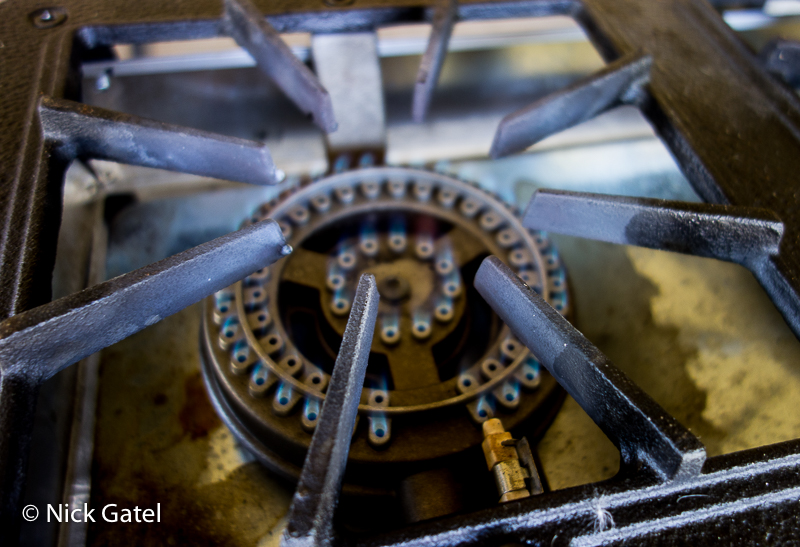
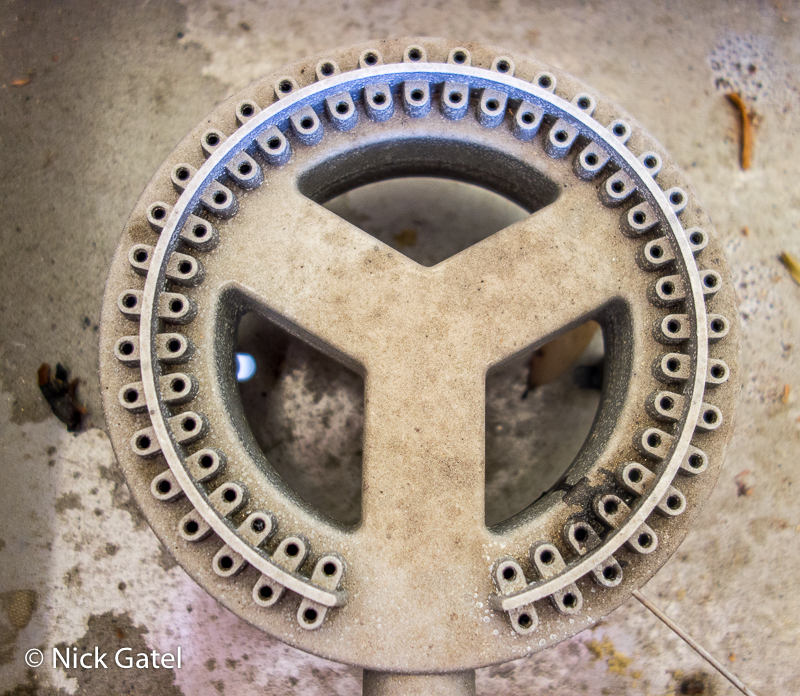
The burner control knobs have four settings.
Each of the grates are 8 inches square and the three burners are 9.5 inches apart, center to center.
Compact: It Has to be Easy to Store
This stove is fairly compact, even though it is a 3-burner vs. the 2-burner Pro 60. It takes up much less space in our camper. However I am concerned the cast iron grates, which are just eight “fingers” suspended from the sides of the stove top, might break if handled roughly, even though they are made from cast iron.
In addition to this, the cast iron legs look like another weak point for breakage (see below).
Given these two concerns, I reinforced the original heavy-duty cardboard box and foam insulation with packing and duct tape to use the box as a carrying/storage case. It is light and keeps the stove safe and secure during travel.

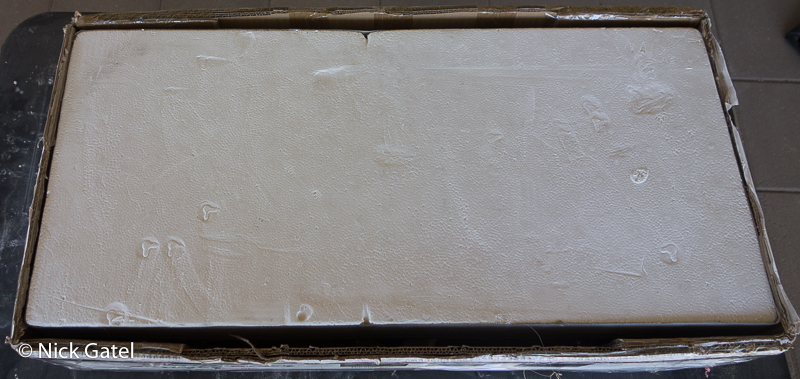
Size: It Has to be Large Enough to Fit a Decent Size Pot(s)
The Ranger III 3-burner stove has almost the same cooking area (449.5 sq in) as the 2-burner Pro 60D stove (448 sq in). So, is there enough area for cooking?
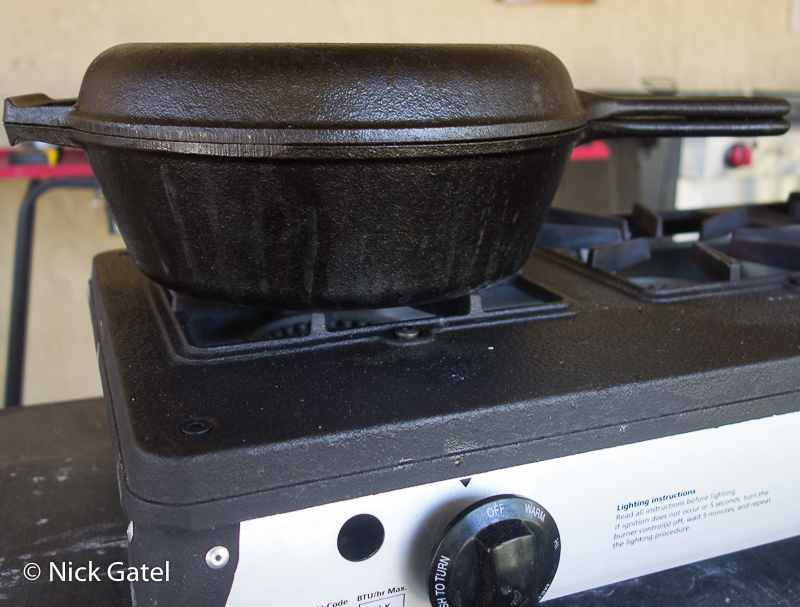

Light Weight?
The stove weighs 25 pounds compared to pounds 47 for the Camp Chef Pro 60. Almost 50% lighter, but still rather heavy for an outdoor camp stove. Easy to unpack, pack, and put into storage. Most of the weight is due to the cast iron top and grates. The cast iron design with the grates integrated into the top does help make it more wind-worthy. Hopefully the construction will hold up over time resulting in a very durable stove.
Griddle Compatible
In the post How to Choose an Outdoor Stove for Your Camper or RV I went into great detail on the Camp Chef griddles available for the Pro 60 stove. Camp Chef’s griddle offerings for that stove (and all their large outdoor stove systems) is outstanding. None of those griddles will work with the Ranger III. The griddles Camp Chef sells are simple universal pieces of cookware.
Instead of sticking with Camp Chef, I bought a Lodge cast iron grill. It covers two of the burners, is reversible, and has a recessed tray to catch grease (no drain like the griddles I use with the Pro 60 stove). It is 20 inches X 10.5 inches. It is the best solution for this stove I could find anywhere.
There is enough room on the third burner to make oatmeal in a pot or make coffee with our 12 cup stainless steel percolator.
So there you have it. The stove:
- Runs on low pressure propane
- Is wind worthy
- Has nice burners
- Is compact
- It handles the pots and pans we normally use
- Is heavy
- Works okay with a griddle
Overall it better fits our needs when camping than the Camp Chef Pro 60. But it isn’t perfect, but again, I don’t think there is a stove on the market that would fulfill all our needs perfectly. I rate the Camp Chef Ranger III: Almost Perfect.
Camp Chef also makes a two-burner vision of this stove, the Ranger II.
This website may be compensated for linking to other sites or for sales of products. As an Amazon Associate I earn a small fee from qualifying purchases at no additional cost to the purchaser.


